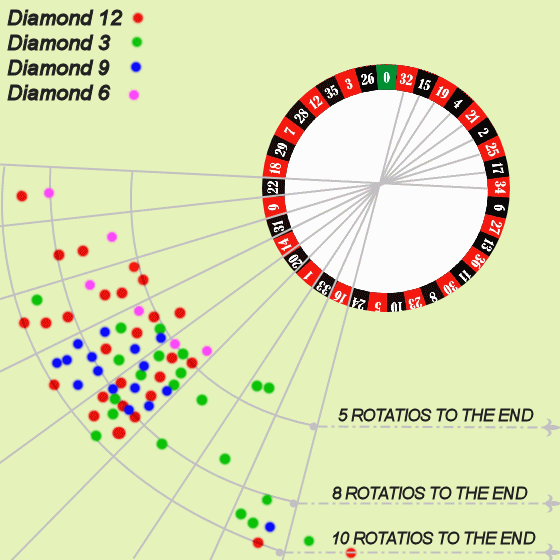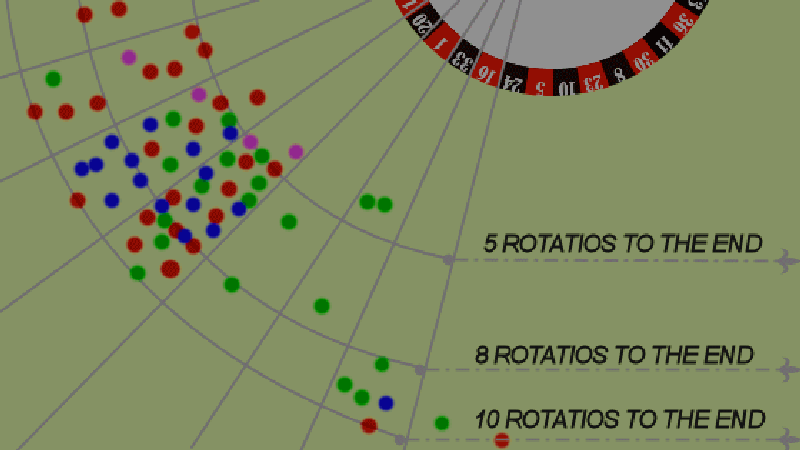Frequently, roulette advantage players engage in debates concerning the accuracy of human timing when tracking the roulette ball. I trust this article will offer significant insights on this topic. This brief video illustrates the predictions made by a roulette computer. For this experiment, I used a modified FFV roulette computer that, instead of vibrating, gives signals through a flashlight and a beep sound. After capturing the ball’s timing, the roulette computer predicts with a beep when the ball is above the predicted number.
- For this experiment, the same video spin was consistently used.
- Predictions varied due to the differing number of ball rotations factored into the calculation and the varying times at which the predictions were made.
- The ball was timed at different diamond positions as well.
- The rotor clocking was disabled and the rotor speed was kept constant, meaning any difference in results can only be attributed to inaccuracies in ball clocking.
Certainly, generating predictions at any given moment during the spin and managing to clock at any position presents a considerable challenge. However, our software is sophisticatedly engineered to handle these complexities. Admittedly, there’s no perfection as calculating the deceleration of the roulette ball can be quite intricate. Besides, consider that the FFV roulette computer not only forecasts, but also processes and times the meeting point of the decelerating ball with the predicted number, which is also in motion. Given the complicated nature of this task, the final outcome is commendable.

The picture displays the distribution of predictions captured in the video. The results of time measurements taken at different diamonds are marked with distinct colours. As can be observed, the outcomes are remarkably similar. To pinpoint the distribution of clocking errors, it’s unnecessary to clock all diamonds – one will suffice. Although it doesn’t harm to demonstrate some capabilities of the FFV, as you can note that clocking at different positions didn’t introduce any significant errors. It’s plausible that my conversation during the ball timing may have induced some inaccuracies. I’ve also arranged the results by the rotation of the prediction. You may note that the data from earlier rotations, clocked with only two ball rotations, is slightly less accurate. Given these predictions and the knowledge that the wheel is level, the results of the predictions are still satisfactory. The results at the 10th ball rotation would have been better if more than 2 ball rotations were clocked. The most challenging part was the counting of marked dots. I counted 52 within 3 numbers (20, 14, and 31). This represents 72% of all predictions. If all predictions were made after the eighth ball rotation with at least three ball rotations clocked, the percentage of accurate predictions within +-2 pockets would likely exceed 90%. However, for those not familiar with advantage play hoping to get rich quickly; please don’t misinterpret. This video and data do not display the total accuracy of predictions compared to results or the ball drop point, but only the deviation in predictions due to different clocking times.
Conclusion
With a well-designed roulette computer, clocking at least 3-4 ball rotations, human timing errors don’t significantly impact predictions.
This particular roulette wheel features a relatively slow ball deceleration, making it challenging to obtain stable predictions. Most predicted ball rotations differ by only 100ms. On older roulette wheels, predictions could be more stable, even with just two ball rotations clocked.

Good test for roulette clocking mistakes.
Testing comments.